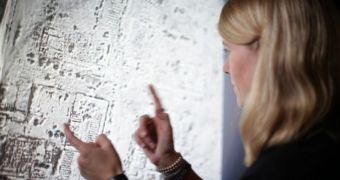Thousands of years ago, numerous ancient Egyptian monuments, including pyramids, tombs and average homes, were buried under the sands. Now, thanks to efforts of American researchers and cutting-edge space technology, they are slowly beginning to resurface.
Researchers are using satellite imagery to figure out where the objects are buried. They then coordinate with land teams, that go and visit the area, and start digging around for clues. In the vast majority of cases, orbital discoveries are promptly confirmed in the field.
Recently, an effort led by experts at the University of Alabama in Birmingham (UAB) yielded the same positive results. The team, led by expert Sarah Parcak, used infrared light data collected by NASA satellites to identify pyramids that are buried beneath the ancient Egyptian city of Tanis.
The sand-covered structures have been abandoned centuries ago, investigators believe, and they might still be in good shape after so many years. Satellite data also identifies tombstones and homes in area around the pyramids.
“What these satellites do is they record light radiation that's reflected off the surface of the Earth in different parts of the light spectrum. We use false color imaging to try to tease out these very subtle differences on the ground,” Parcak tells Rachel Martin of NPR.
“You just pull back for hundreds of miles using the satellite imagery, and all of a sudden this invisible world become visible,” the team leader says, adding that the differences her team is searching for are very subtle and hard to find.
“You're actually able to see settlements and tombs – and even things like buried pyramids – that you might not otherwise be able to see,” she goes on to say, quoted by Daily Galaxy.
Over the past few months, the UAB team managed to discover the existence of no less than 17 structures, all of which had about the same shape, orientation and size. These traits were also comparable to those of other pyramids previously found in this region.
At this time, excavations have only begun at two of the 17 sites, and the initial estimates seem to support the idea that the structures are indeed pyramids. However, Parcak explains that this will only be established when the objects are entirely exacavated.
“We only have a limited amount of time left before many archaeological sites all over the world are destroyed. So we have to be really selective about where we dig." The new tools might just buy archaeologists a little more time. We've got to map all of our ancient history before it's gone,” she adds.

 14 DAY TRIAL //
14 DAY TRIAL //